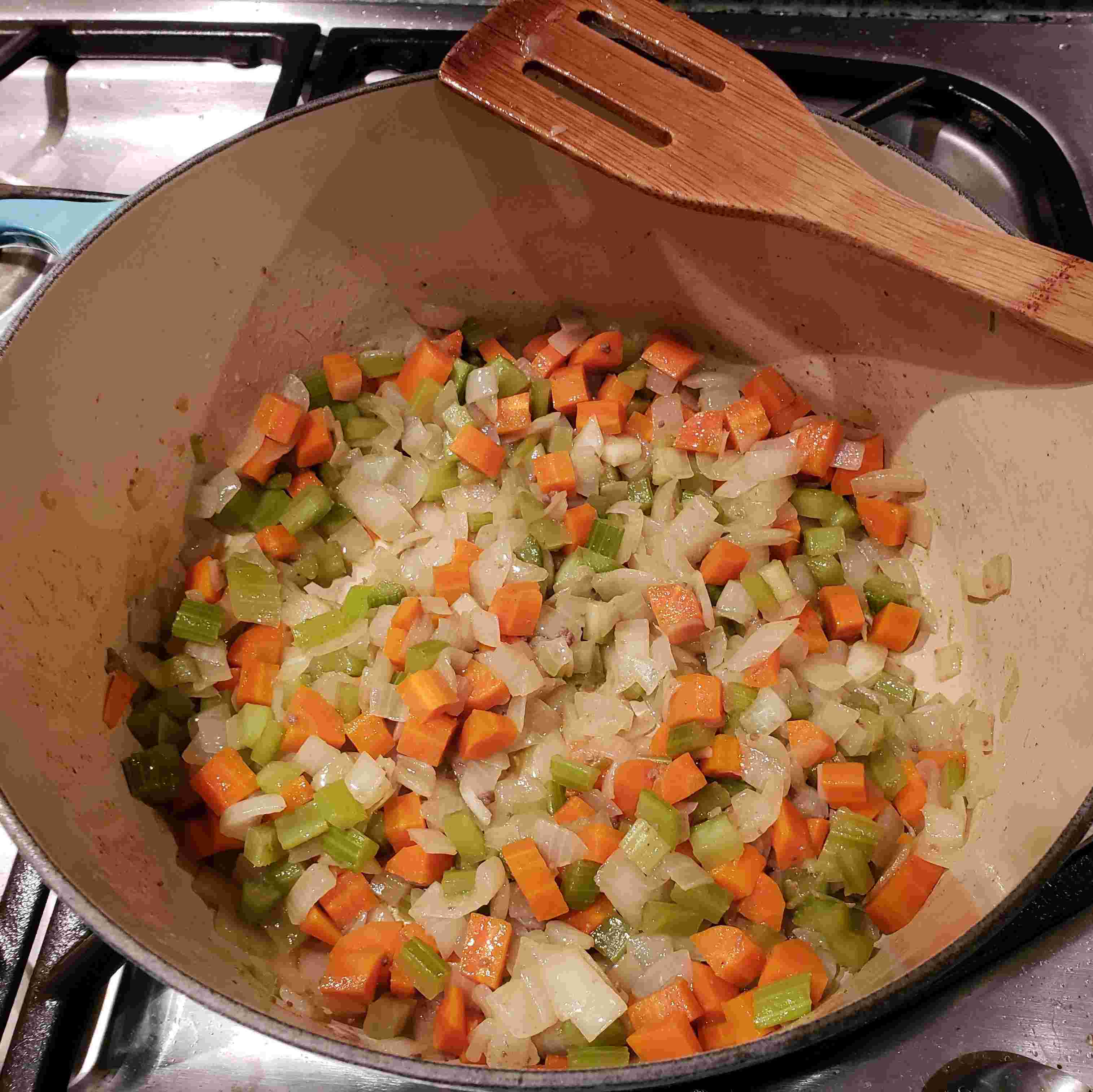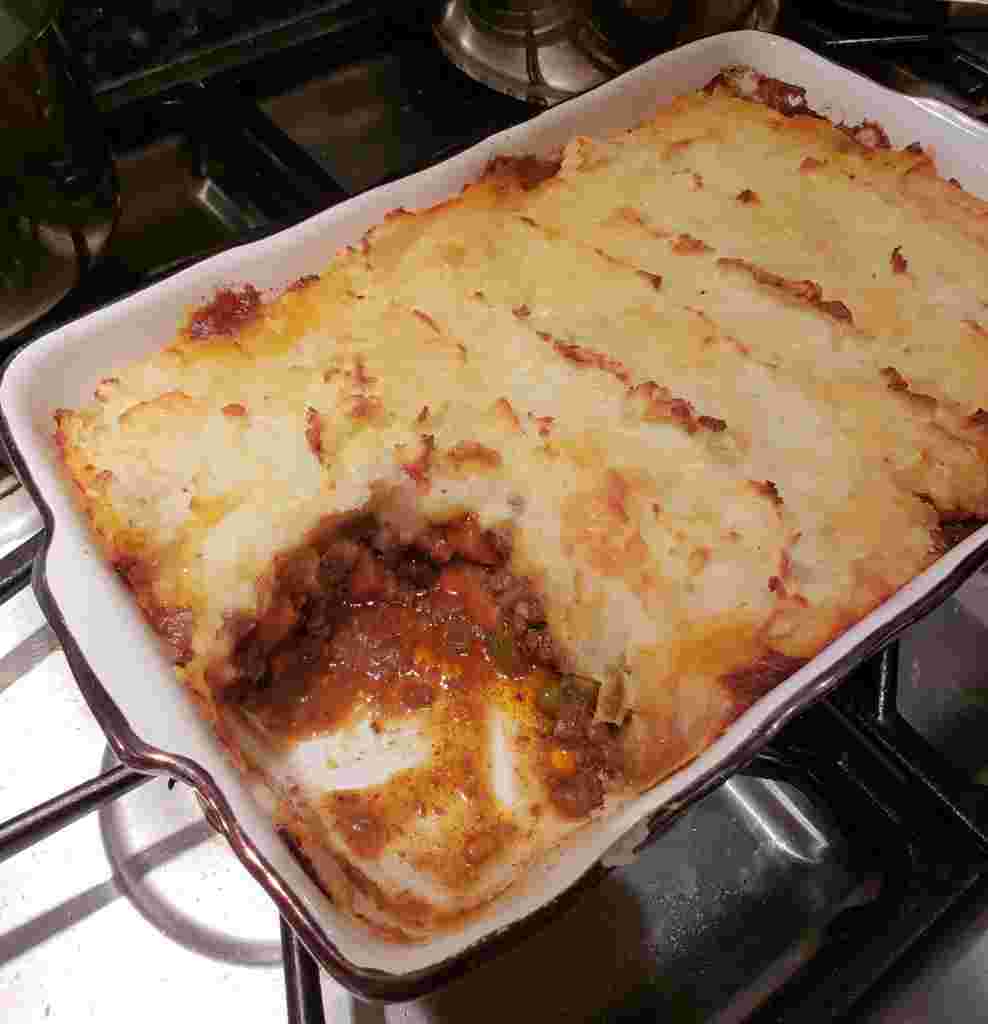
While James was reading my blog a few weeks ago (as he is my most loyal reader and proofreader), he mentioned that maybe I talk about him too much. So I went back and read some recent posts, and realized that maybe he is right?? So then I actively tried not to do that. I wrote about the food or the ingredients, or why I chose certain recipes, or other friends. But it was impossible not to mention James! Our tastes and preferences have been slowly, subconsciously merging over the past few years, and James’s likes now influence and inspire so much of what I (we) make. In discovering how much James crops up on this blog, though, I’ve come to realize that perhaps I have been underestimating the role that James plays in our kitchen life.
I think that, as a feminist living in a brave new 21st century world, I’m sometimes embarrassed by how much I love cooking and baking, because of the historical connotations. There are definitely times when I feel like a clichéd trope of a wife, bustling around in my apron and timing everything to get dinner on the table just as James comes home. To be clear, I am not disparaging or devaluing in any way any person (male or female) who chooses to focus on the household in place of formal employment, or who chooses to focus on the household as their formal employment. But these days, when the opportunities and identities available to women are more abundant, varied, and exciting than ever, from entrepreneur to movie director to presidential candidate, it’s hard to feel like I’m breaking the glass ceiling when I’m just doing in my own kitchen what women have been doing for centuries in their own kitchens, usually by obligation and very infrequently by choice.
So sometimes I project my discomfort about this particular identity onto James, when he gets home late or doesn’t help enough around dinnertime. I get anxious that James isn’t pulling his weight and we’re reverting back to traditional gender roles. But writing this blog has given me a completely new sense of how much of a presence and support James is, even though he may not be physically chopping up the carrots or stirring the risotto. He’s always interested, and he always takes me rambling on about the correct way to wash produce or the necessity of using up the celery in the fridge very seriously. Even though I do most of the cooking, he holds a number of indispensable supporting roles – as sous chef, dish washer, deputy grocery shopper, feedback provider, moral supporter, and trouble shooter. And for all of that, I’m very grateful. In short, I’m afraid chitter chatter about James is here to stay! Skip to the pictures and recipes if you don’t like the commentary!
Speaking of pictures…
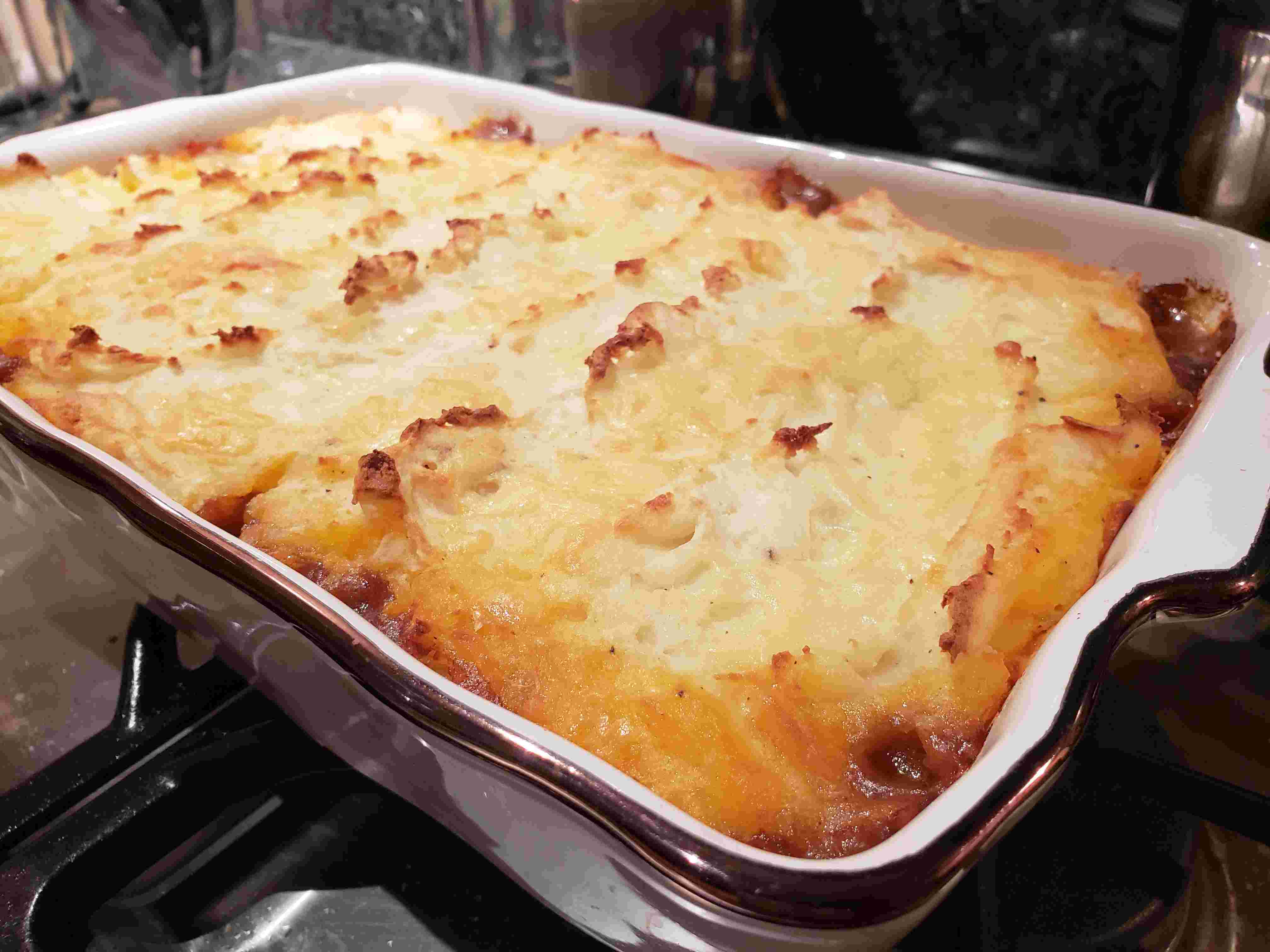
The justification for the above philosophizing is that today’s recipe, cottage pie, is as British as James. You may be confused, and thinking, what is cottage pie?? Well, you may know it as its more common cousin, shepherd’s pie. However, there is actually a difference between the two, and that’s in the meat: shepherd’s pie contains lamb (which makes sense: shepherds… lambs), and cottage pie contains beef! So, what is commonly labeled as shepherd’s pie here in the U.S. is a misnomer – it’s actually cottage pie. Cottage pie is delicious British comfort food, a rich, meaty stew of minced beef, carrots, celery, and onions, stewed with plenty of herbs and spices, and topped with a creamy, cheesy mash of potatoes. It’s so unbelievably good, and freezes wonderfully, which means you can double the recipe and freeze one for later, or gift one to busy friends and neighbors. When our friends Rupa and Dave had a baby, James and I brought them a frozen cottage pie, and felt both very adult, and very suburban, toting over a meat pie.
Cottage pie is fairly straightforward to make, and requires only some basic ingredients and food preparation, but it is rather time intensive – with softening the vegetables, simmering the beef mixture, then baking the final assembled dish, just the total cooking time can take up to an hour and 45 minutes. You also have to prepare two separate components – the beef mixture and the potato mash, which is sort of annoying. Thus, it’s not really appropriate for the weeknight. James and I usually make it on a slow Sunday, or, we divide the work over two days – we make the beef mixture on Sunday, then make the potato mash and bake it on Monday. This also has the advantage of letting the beef mixture cool entirely and thicken a little, which prevents the potato mash from sinking into the gravy.
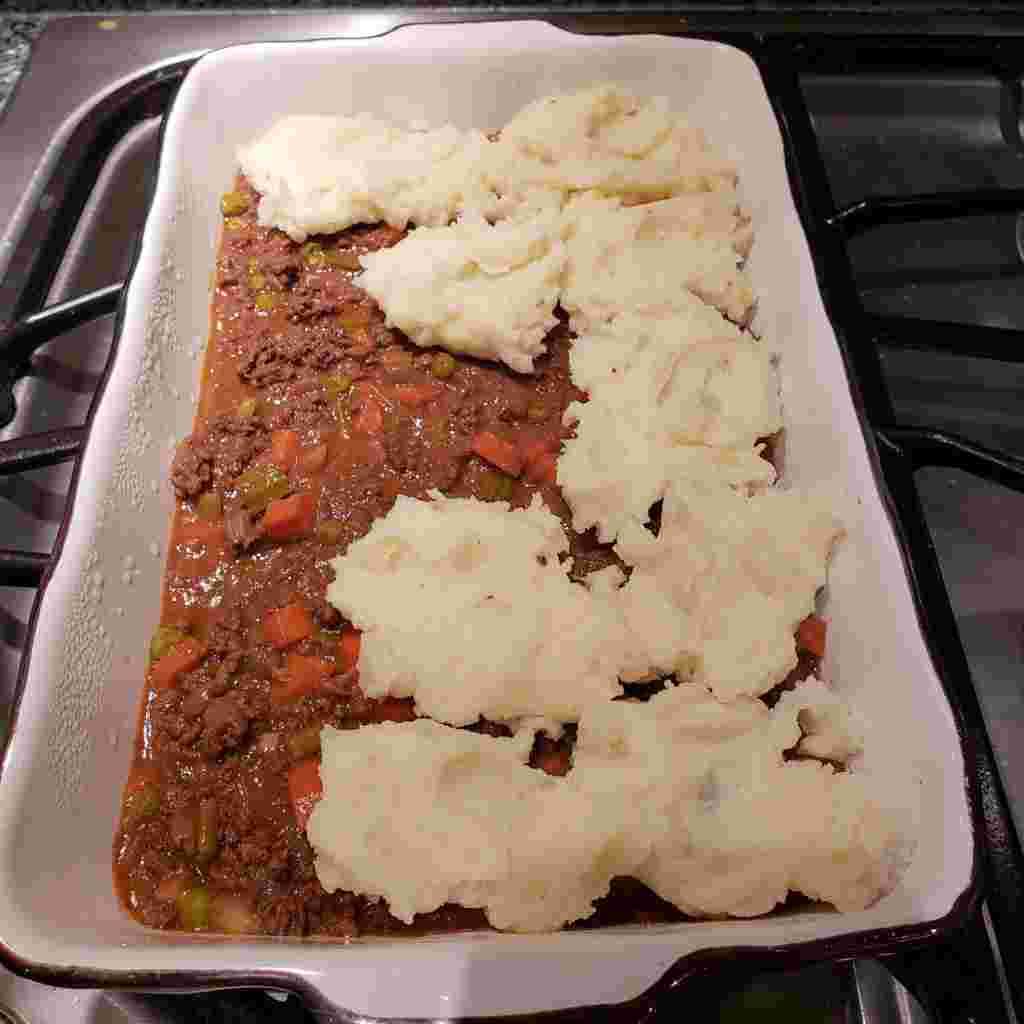
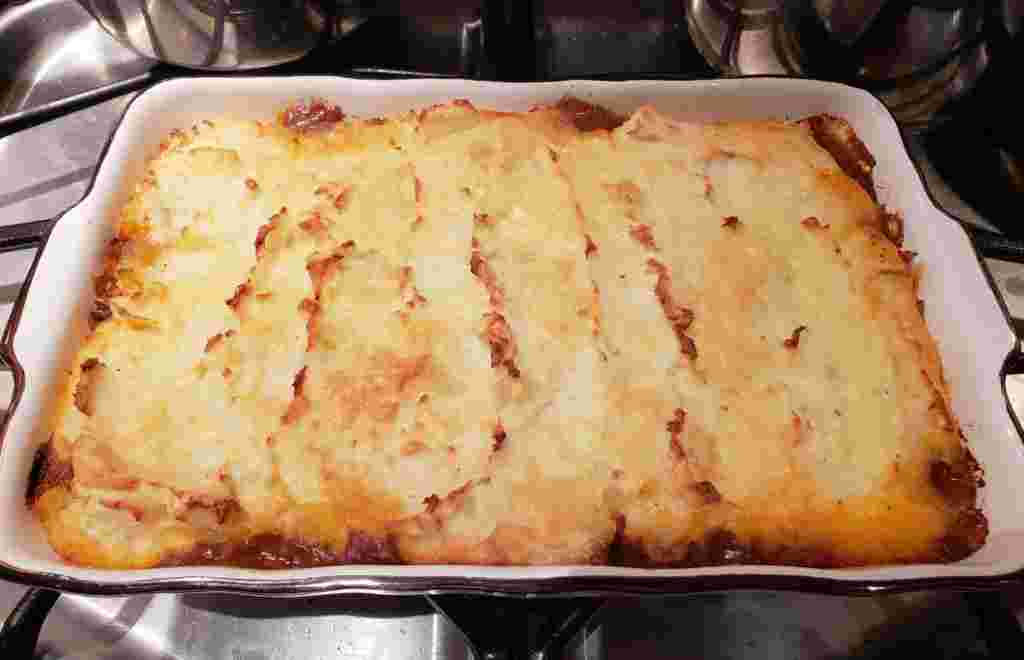
Other Notes:
- This recipe is easily scaled up if you want extras, or want to freeze a portion. This recipe below is actually half of the original BBC recipe, which serves a whopping 10 people. Likewise, you can also scale down if you want, although why you would do that, I have no idea – it is so good, and keeps getting better the next day!
- In a hurry, we’ve definitely not simmered the beef mixture for long enough before adding the potato mash on top. If your beef mixture is too soupy, the potato mash will sink into the liquid during baking, as the gravy bubbles up (the potatoes will end up resembling icebergs instead of ice floes). Your pie will still be delicious, but the mash will just be soggier and won’t have as much of that crisp, browned top crust. But don’t worry – the potatoes won’t dissolve into the gravy and turn the whole thing into thick potato soup, as I feared!
- For prettier presentation, or if you’re making this over two days, we assemble the dish in a baking dish, as instructed in the recipe. If we’re just making the whole thing in one day, I often cook the beef mixture in a 5 1/2 quart Dutch oven and assemble the dish directly in the Dutch oven, spooning the potatoes on top of the beef. If you go the latter route, know that due to the slightly smaller surface area supporting the potatoes, the potatoes are also more likely to sink. This is okay, and will still be delicious (see above bullet point).
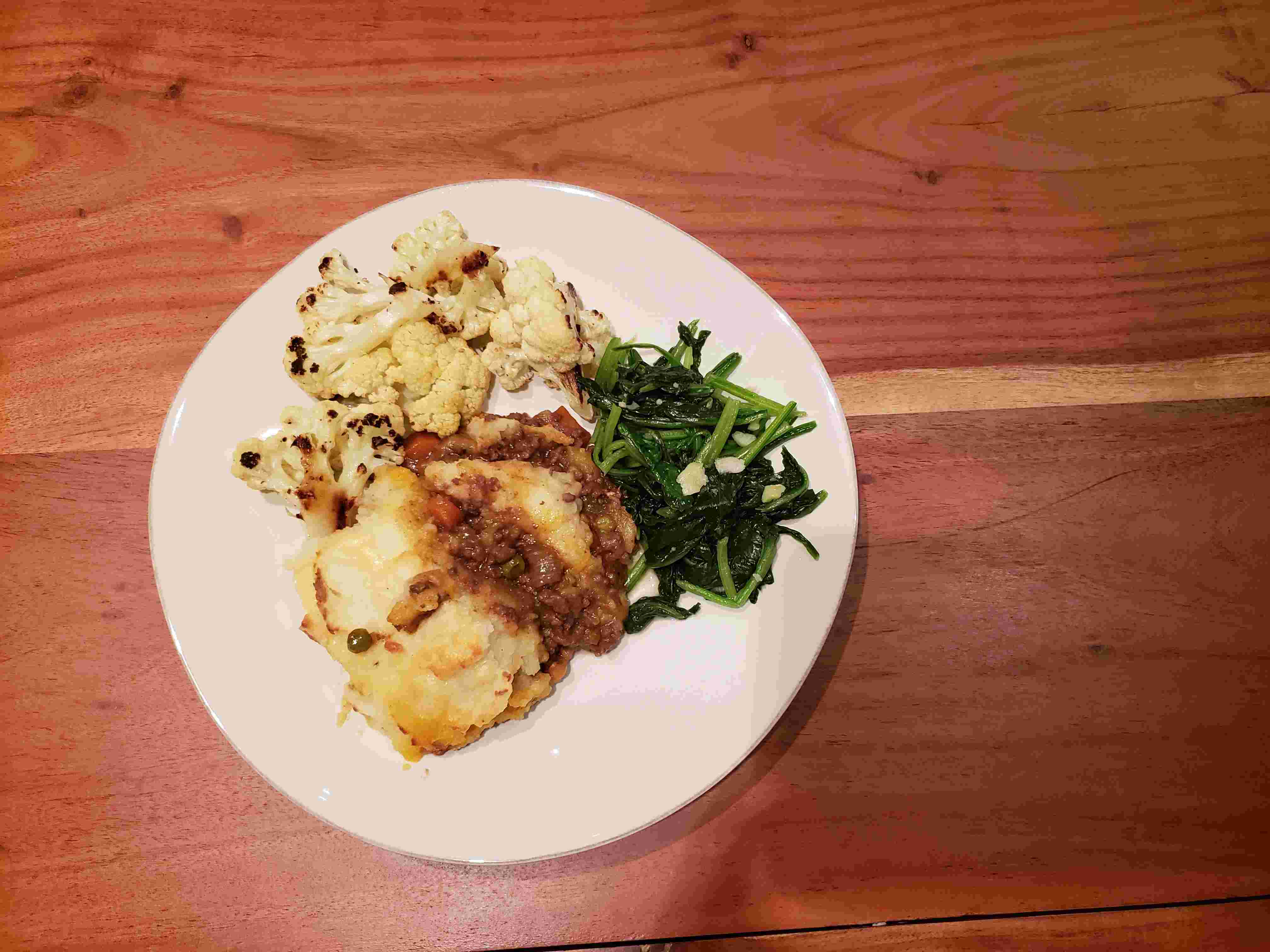
| Servings | Fuss Factor | Total Time | Prep Time | Cook Time |
|---|---|---|---|---|
| 5-6 | Sunday Dinner | 2 hours 10 minutes | 25 minutes | 1 hour 45 minutes |

Cottage Pie
Source: BBC Good Food
Ingredients
- 1-2 tablespoons olive oil
- 1 1/2 pounds ground beef
- 1 large onion, chopped
- 2 large carrots, chopped
- 2 celery sticks, chopped
- 4 garlic cloves, finely minced
- 1 1/2 tablespoons flour
- 1 tablespoon tomato paste
- 1/3 cup red wine (optional)
- 1 3/4 cups beef stock
- 2 tablespoons Worcestershire sauce
- 5-7 thyme sprigs
- 2 bay leaves
For the Potato Mash:
- 2 pounds potatoes, peeled and chopped into large pieces (I used Russets; Yukon Gold will also work well)
- 1/2 cup milk (I used 2%, which I liked; use whole for a richer mash)
- 1 tablespoon butter
- 3 1/2 ounces strong cheddar, grated (or more to taste)
- 1/8 teaspoon ground nutmeg
Instructions
-
Heat 1 tbsp oil in a large saucepan or Dutch oven over medium-high heat, and cook the beef until browned. Once browned (it doesn't have to be fully cooked through), scoop up the beef with a slotted spoon and set aside.
-
Add a little more oil into the pan if it's looking dry, and add the onion, carrots, and celery. Cook over medium-low heat until soft, about 15-20 mins. Add the garlic, flour and tomato paste, increase the heat to medium and cook for 2-3 minutes more, then return the beef to the pan. Pour in the wine, if using, and boil for 2-3 minutes to reduce it slightly. Add the stock, Worcestershire sauce, thyme, and bay leaves. Bring to a simmer and cook, uncovered, for about 45 mins. The beef mixture is done when most of the liquid has evaporated and the sauce becomes thick, like the consistency of gravy, and coats the meat. Check after about 30 mins: if a lot of liquid remains, increase the heat slightly to help reduce the gravy. Taste and season with salt and pepper, if desired, then discard the bay leaves and thyme stalks.
-
As the beef mixture simmers, make the potato mash. Place potatoes in a large pot and cover with cold salted water by 1 inch. Bring to a boil, then reduce heat and simmer until tender, about 10-15 minutes. Drain well, then allow the potatoes to steam-dry for a few minutes. While you're waiting, preheat the oven to 400°F. Mash the potatoes with the milk, butter, about 3/4 of the cheese, and the nutmeg. Taste, and season with salt and pepper if desired.
-
Spoon beef mixture into a 12"x8.5" baking dish. Spoon the potato mash on top of the beef to cover. Sprinkle the remaining cheese on top (add more cheese, if desired). Bake in the oven at 400°F for 25-30 mins, or until the topping is golden brown and the gravy is bubbling at the sides.
Recipe Notes
To Freeze:
Assemble the pie with the beef and the potato mash, and cool completely. Once cool, cover well with cling film and freeze. For the best preservation, always freeze the pie on the day that you make it. To eat, defrost in the fridge overnight, then cook as per the recipe. Alternatively, to cook from frozen, heat oven to 350°F, cover with foil and cook for 1 1/2 hours. Increase oven to 400°F, uncover and cook for 20 minutes more, until golden and bubbling.


